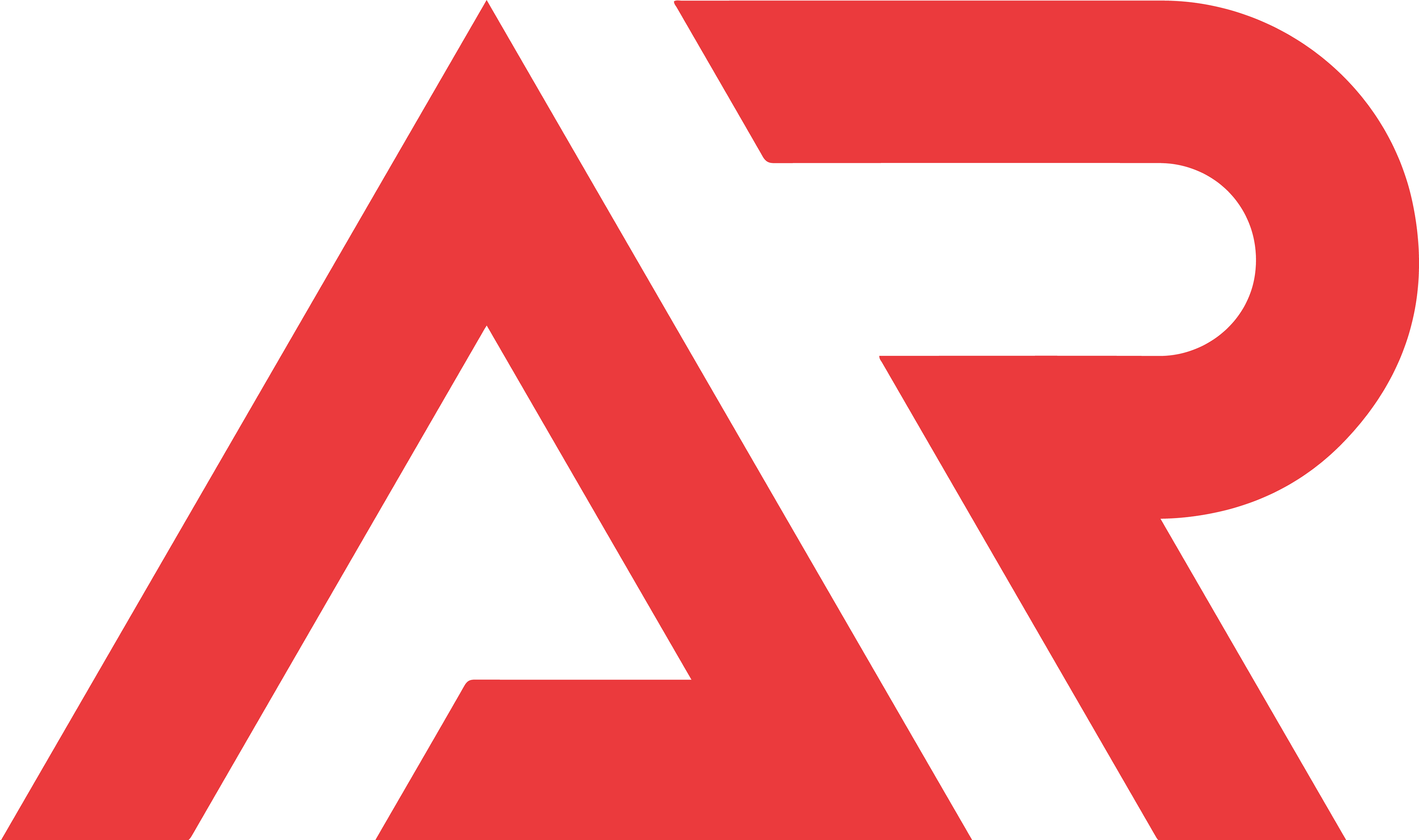"In 2021, about 5.8 million Canadians, including over 1.4 million children, lived in food insecure households."
Proof Food Insecurity Policy Research 2022
Food insecurity affects over 5.8 million Canadians, including 1.4 million children. In Calgary alone, 1 in 5 residents say they struggle to easily buy groceries — yet for every five households eligible for food supports, only one actually accesses them.
Our challenge was to understand the root causes behind this disconnect and design a solution grounded in dignity, access, and choice. Through early research and community interviews, we hypothesized that many avoided food supports not due to lack of need, but because of how those supports were delivered: long intake processes, lack of culturally appropriate foods, limited choices, and the shame of having to prove hardship. Many expressed that these systems unintentionally reinforced stigma or created barriers rather than alleviating them.
The Market was conceived as a radical reimagining of the food experience: a pay-what-you-want (PWYW) grocery store where all customers, regardless of financial status, could shop for fresh, healthy food in a welcoming environment without judgment or disclosure. The vision was simple: could a model rooted in trust, kindness, and autonomy help close the food insecurity gap?
In collaboration with Sydney Johnson, Erika Mahoney, Pam Downey, Krista Rondeau, Cindy Lam, James Gamage, Lynn Holdsworth, Monique Blough, and Tim Chen (for the amazing photos).
.
.
We wanted to create solution that was rooted in the principles of:
Context
The concept for a PWYW market emerged during the process of community-wide idea competition focused on increasing food security. Afterwards, we initiated our research process with a scan of current food security research and an environmental scan of other PWYW initiatives. The team conducted interviews with subject matter experts and people who had personal experience with food insecurity. Our approach was evidence based and allowed us to build on both the experiences of others and existing food insecurity research. To begin to prototype the idea, we created two life-size shops made from paper and cardboard. “The Cardboard Market” was held over two weeks, to learn more about what would create an excellent experience for all customers.
Recognizing that for a model like this to work, two customer groups need to be designed for: those who are paying more than a suggested total and those who are paying less or nothing. Therefore, the prototype test participants included a spectrum of individuals with varying levels of lived experience with food insecurity. To create a feeling of dignity in the shopping experience and attract a range of customer types, it was critical that the shop should feel like any other store. These prototypes served to refine different aspects of the experience to suit the different shoppers and provided valuable feedback for our next iteration. In total, we completed 30 prototype tests, 19 physical tests and 11 virtual tests.
Pilot Testing
We took feedback from The Cardboard Market to create the next level of fidelity, the Pilot Market, a fully functioning pop-up market with real food, customers, and vendors. These pilots took place over a seven-month period, serving over 1,300 customers. Each pop-up was strategically located in a Calgary neighbourhood with documented markers of food insecurity: Tuxedo Park, a demographically mixed area with physical accessibility and affordability concerns; Downtown Core, overlapping populations of homelessness and those who come to the area to shop, access services, or spend time; and Dover, a designated food desert with a high number of lone-parent families and subsidized housing. We supplied the markets with food through a combination of wholesale purchases, donations, and individual vendors who sold their own product, all using the PWYW approach. The team intended The Market to look and feel like any other market and accomplished this through additions such as musicians, greeters, and signage. To hear directly from the customers about their shopping experiences, engagement areas were set up at each market. Customers were given the opportunity to express how they felt, their likelihood to return, what they liked, what they didn’t like, and if there was anything else they would like the team to know. Every market iteration built upon the learnings from the last.
At each market, we tested key components of the experience, including:
Payment models: suggested pricing vs. no pricing, cash vs. card, pay-it-forward options
Checkout flow: placement of registers and greeters, clarity of signage and tags
Store environment: music, welcoming tone, warmth of staff
Language: signage emphasizing “$1-ish” to reduce pressure, non-judgmental messaging
Dignity: ensuring shoppers were not praised for paying more or shamed for paying less
Each test included live feedback stations, follow-up surveys, and interviews with customers and vendors. The design evolved with each iteration, becoming clearer, kinder, and more inclusive through direct response to user feedback.
Market 1
The first Market was held in December 2021 at Tuxedo Park Community Association over two days, serving 94 customers. The team tested POS systems, payment methods, marketing, language, store setup, flow, wayfinding, and signage. There were 140 transactions totalling over $1,500 in sales, with an 8% overall rate of return. Payments were 17% above, 26% at, and 57% below the suggested price. Cash made up 26% of payments, credit/debit 74%, and there were no “No Payment” transactions. The response was very positive, with local media coverage on CBC Radio, Global News Calgary, and Radio Canada.
The first Market was held in December 2021 at Tuxedo Park Community Association over two days, serving 94 customers. The team tested POS systems, payment methods, marketing, language, store setup, flow, wayfinding, and signage. There were 140 transactions totalling over $1,500 in sales, with an 8% overall rate of return. Payments were 17% above, 26% at, and 57% below the suggested price. Cash made up 26% of payments, credit/debit 74%, and there were no “No Payment” transactions. The response was very positive, with local media coverage on CBC Radio, Global News Calgary, and Radio Canada.
Market 2
The second Market in March 2022 ran for three days, serving over 890 customers and earning over $4,500, with a -7% overall rate of return. Payment distribution was roughly one-third above, one-third at, and one-third below the suggested price daily. “No Payment” transactions were 6% (highest of the three pilots). Credit/debit dominated on Thursday and Friday, while Saturday was evenly split with cash. Customers enjoyed the friendly atmosphere, felt welcomed, valued the non-judgmental environment, and appreciated supporting local vendors.
The second Market in March 2022 ran for three days, serving over 890 customers and earning over $4,500, with a -7% overall rate of return. Payment distribution was roughly one-third above, one-third at, and one-third below the suggested price daily. “No Payment” transactions were 6% (highest of the three pilots). Credit/debit dominated on Thursday and Friday, while Saturday was evenly split with cash. Customers enjoyed the friendly atmosphere, felt welcomed, valued the non-judgmental environment, and appreciated supporting local vendors.
Market 3
The third Market in June 2022 served 336 customers, earning over $2,600 with a -39% overall rate of return. Of 300 transactions, 46% were below, 26% at, and 28% above the suggested price, with 3% “No Payment” transactions. Cash dominated at 62%, the highest among the three pilots. Changes included a visual greeter script and adding “ish” to price cards (e.g., “$1.00 ish”) to reinforce the concept and reduce confusion. Customers reported positive experiences and a high likelihood of returning.
The third Market in June 2022 served 336 customers, earning over $2,600 with a -39% overall rate of return. Of 300 transactions, 46% were below, 26% at, and 28% above the suggested price, with 3% “No Payment” transactions. Cash dominated at 62%, the highest among the three pilots. Changes included a visual greeter script and adding “ish” to price cards (e.g., “$1.00 ish”) to reinforce the concept and reduce confusion. Customers reported positive experiences and a high likelihood of returning.
“It didn’t feel like I had to earn the right to be here.”
– Anonymous Customer
Impact
Across the three pilots, The Market served over 1320 customers and processed nearly 1000 transactions. One of the most compelling findings was that 39% of those transactions were under the suggested price—clear evidence that need was present. And yet, the model held. Rather than being taken advantage of, the system balanced itself. Vendors reported positive experiences, some even profiting slightly. Many shoppers, whether experiencing financial stress or not, chose to pay more than the suggested price or offer to pay it forward. No one was denied, shamed, or questioned for paying less. In fact, there were no recorded “walk-offs” or abuses of the model. Trust, it turned out, was self-reinforcing.
Perhaps more importantly, the emotional response was profound. Shoppers shared that the experience felt “normal,” “relieving,” and even “joyful.” The layout, atmosphere, and tone of the market felt radically different from traditional food banks, not because of the food itself, but because of the dignity extended throughout the process
Our main objective for The Market was to create a new, human-centred, and sustainable approach to food insecurity reduction in Calgary. Throughout the design process, the customer was at the heart of every decision. Built on the foundations of dignity, access, and choice, The Market gave complete financial freedom to all customers using the PWYW business model. The Market provided a dignified experience and has the capacity to transform the way we support our fellow community members who struggle to afford food and have a lasting impact on our communities.
This project has opened the eyes of many to illustrate how a little can go a long way, how simple kindnesses can mean the world, and how paying what you want has the capacity to transform the charitable food sector and help reduce food insecurity.
These learnings directly led to the launch of Open Market, a one-year pilot of weekly, community-based continuation of the PWYW model in collaboration with Fresh Routes. With steady vendor partnerships, regular shoppers, and continued iterative design, Open Market became a new kind of grocery experience—one that sees people not just as users of a service, but as members of a community with something to give.

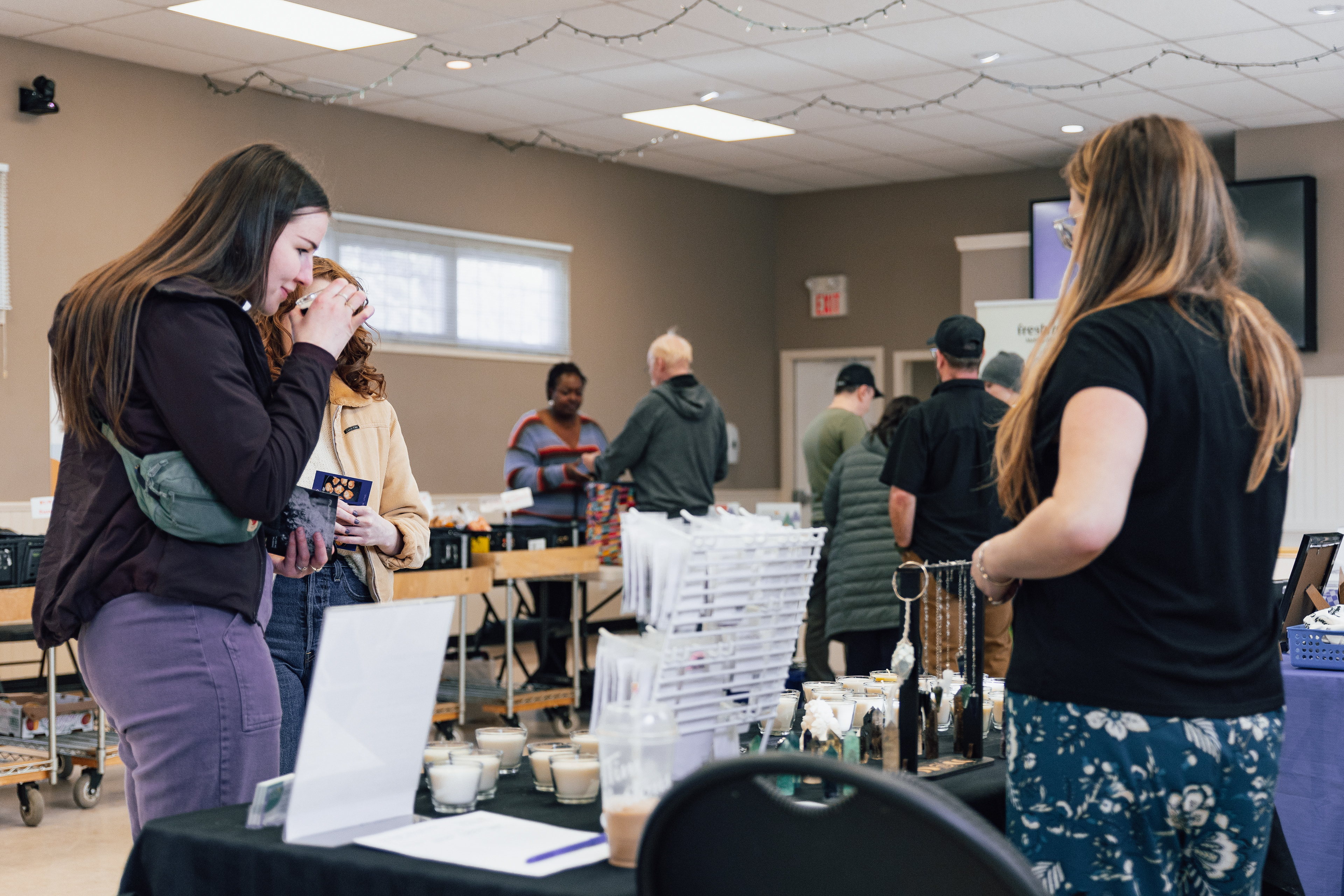
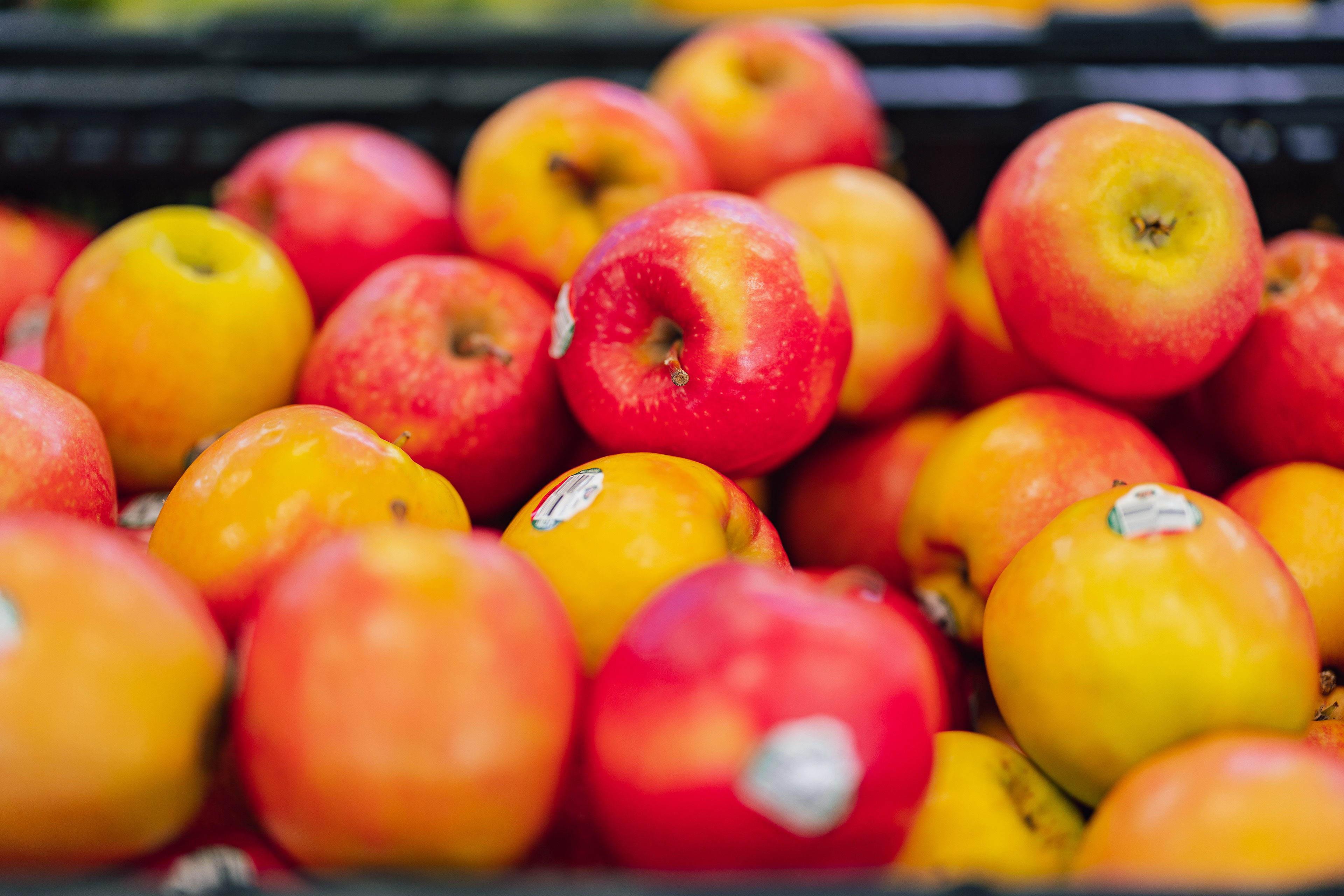

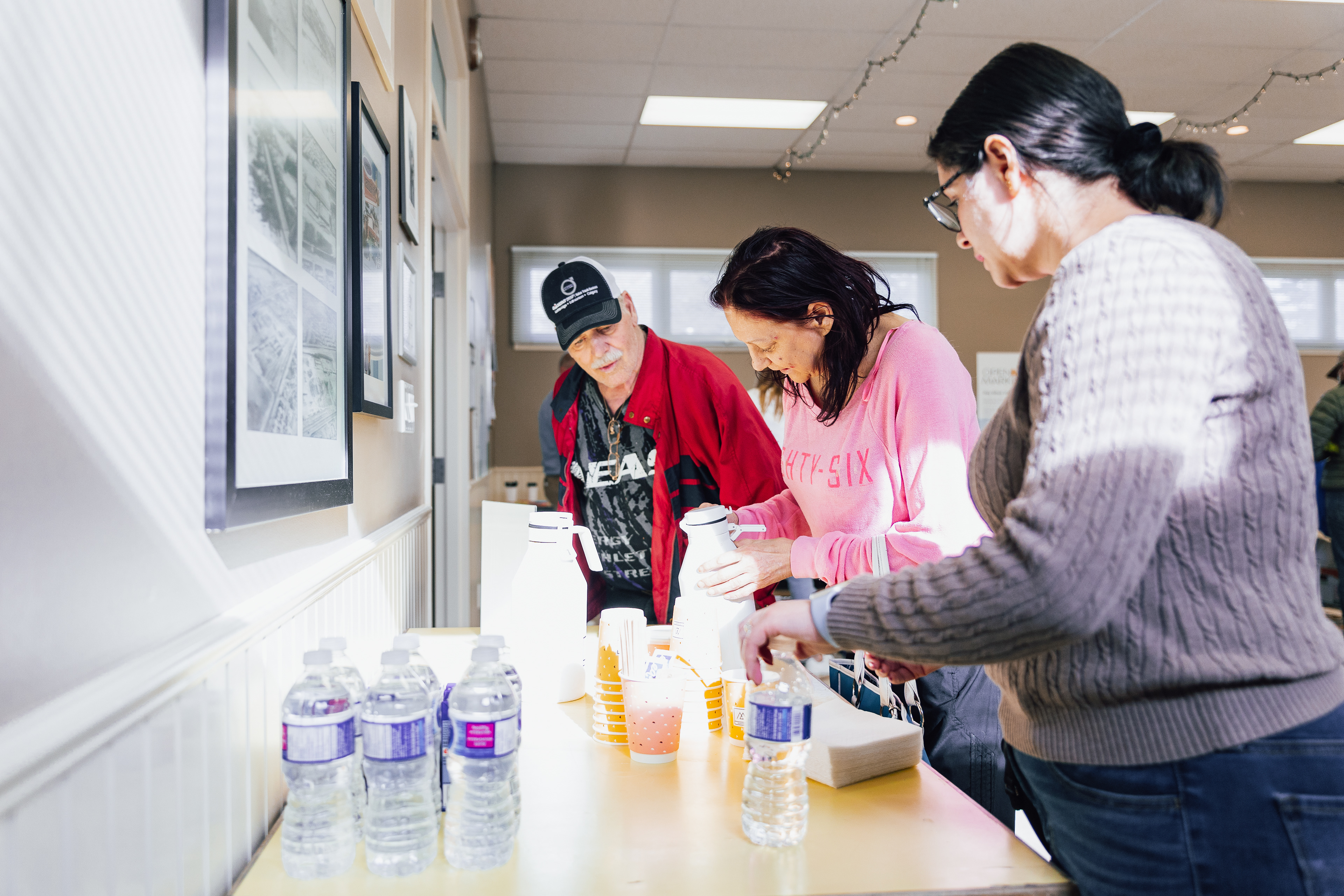
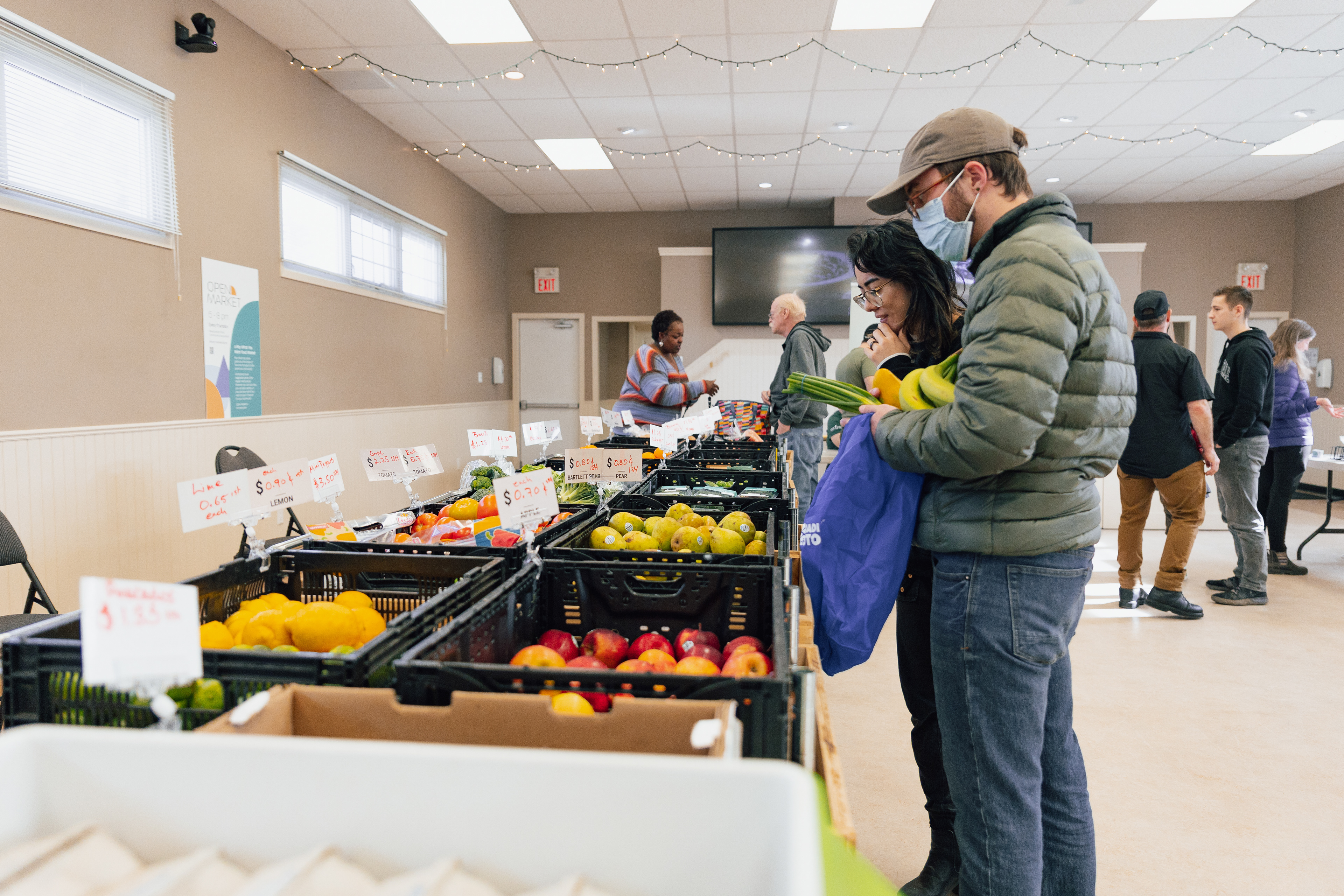


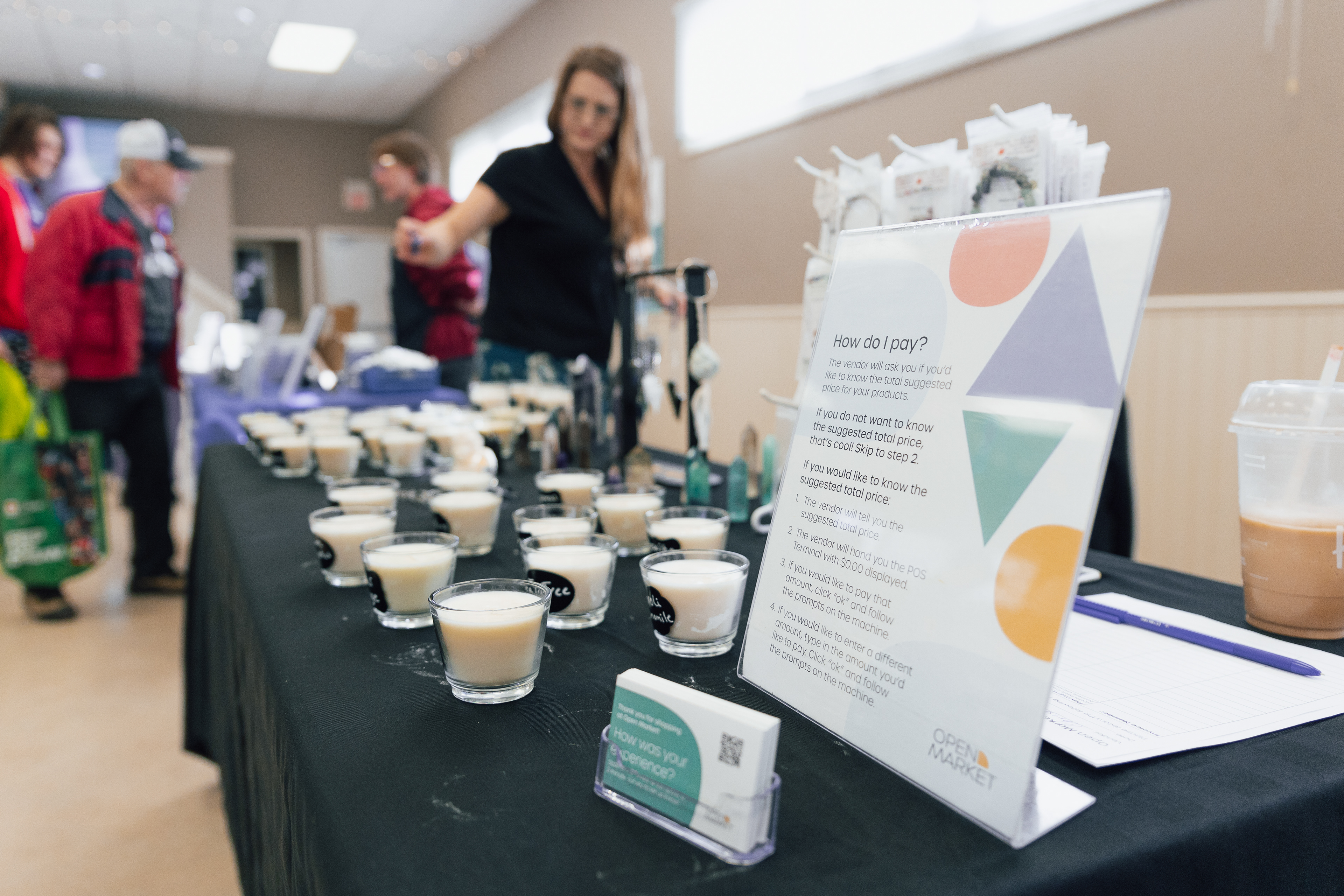
"I came to see if it was true...that you could pay what you could. That you’d be welcomed no matter what. And I did. And I was.”
– Anonymous Customer

